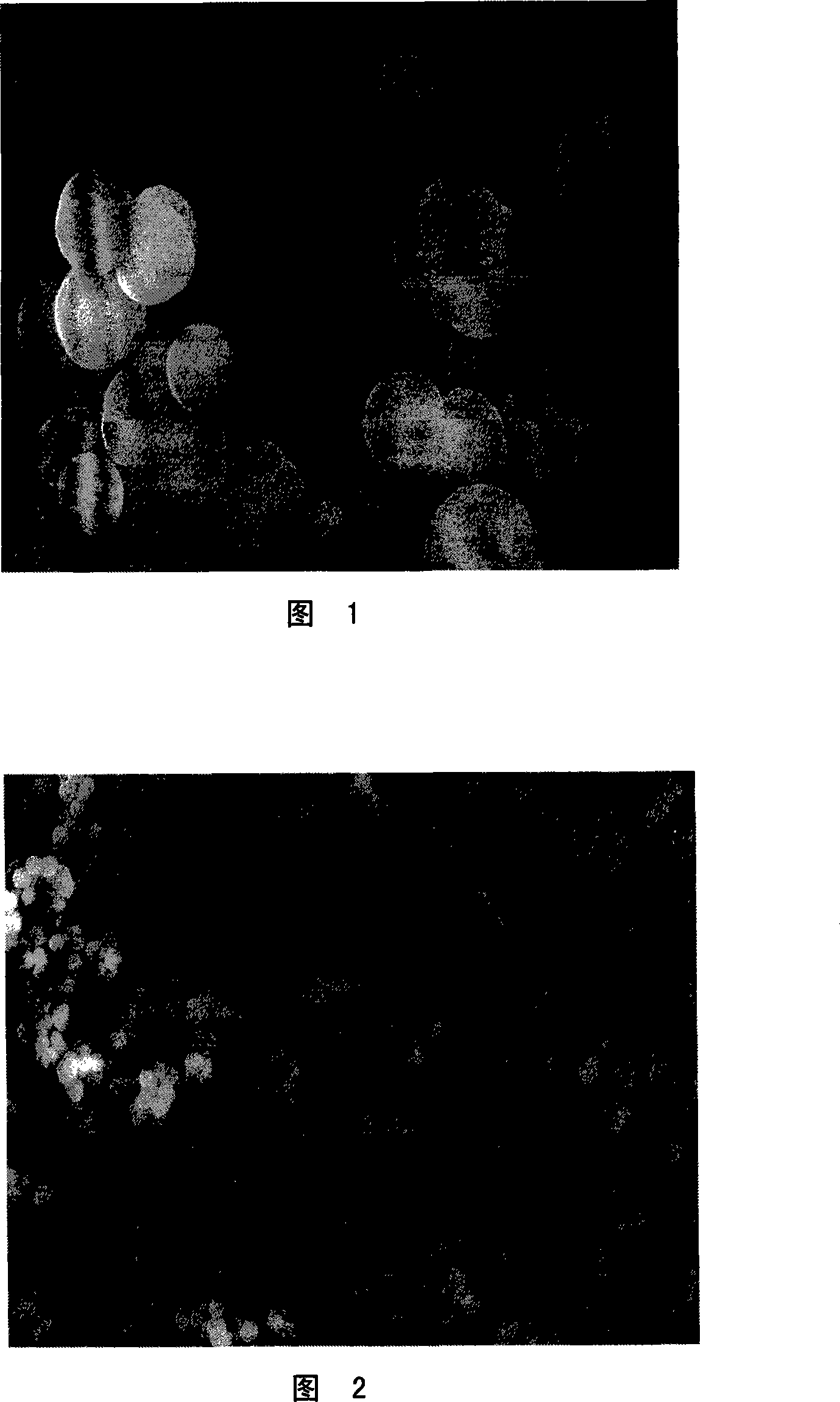Method for preparing bisphenol A molecular engram polymer
A molecular imprinting and polymer technology, applied in the field of new materials, can solve the problems of restricting the development of solid-phase extraction technology, complex cosmetic sample matrix, low content of target substances, etc., to achieve excellent recovery effect, high recovery rate and high sensitivity. Effect
- Summary
- Abstract
- Description
- Claims
- Application Information
AI Technical Summary
Problems solved by technology
Method used
Image
Examples
Embodiment 1
[0016] Dissolve 9 mmol of template molecule bisphenol A and 6 mmol of functional monomer methacrylic acid into 12 mmol of crosslinker N,N′-methylenebisacrylamide, 40 mg of initiator azobisisobutyronitrile and 100 mL of Prepare a mixed solution from pure acetonitrile solution; ultrasonically degas the mixed solution for 6 minutes, pass nitrogen gas for 10 minutes to remove oxygen molecules, then seal the mixed solution, and polymerize by heating and stirring to form a white powder polymer at a polymerization temperature of 65°C , The reaction time is 20h. After the polymerization is completed, use a mixed solution of 100 mL of methanol and acetic acid with a volume ratio of 9:1 to extract the synthesized polymer by Soxhlet extraction to remove template molecules, and then use pure methanol to extract and remove acetic acid molecules. . After the extraction, the polymer was dried in a vacuum drying oven to a constant weight, and finally the bisphenol A molecularly imprinted pol...
Embodiment 2
[0018] Dissolve 10 mmol of template molecule bisphenol A and 6 mmol of functional monomer methacrylic acid into 12 mmol of crosslinker N,N′-methylenebisacrylamide, 40 mg of initiator azobisisobutyronitrile and 100 mL of Prepare a mixed solution from pure acetonitrile solution; ultrasonically degas the mixed solution for 6 minutes, pass nitrogen gas for 10 minutes to remove oxygen molecules, then seal the mixed solution, and polymerize by heating and stirring to form a white powdery polymer. The polymerization temperature is 65 °C, the reaction time is 20h. After the polymerization is completed, use a mixed solution of 100 mL of methanol and acetic acid with a volume ratio of 9:1 to extract the synthesized polymer by Soxhlet extraction to remove template molecules, and then use pure methanol to extract and remove acetic acid. molecular. After the extraction, the polymer was dried in a vacuum drying oven to a constant weight, and finally the bisphenol A molecularly imprinted po...
Embodiment 3
[0020] Dissolve 10mmol of template molecule bisphenol A and 6mmol of functional monomer acrylamide into a solution containing 12mmol of crosslinker N,N′-methylenebisacrylamide, 40mg of initiator azobisisobutyronitrile and 100mL of pure Prepare a mixed solution in an acetonitrile solution; ultrasonically degas the mixed solution for 6 minutes, pass nitrogen gas for 10 minutes to remove oxygen molecules, then seal the mixed solution, and polymerize by heating and stirring to form a white powdery polymer at a polymerization temperature of 65°C , The reaction time is 20h. After the polymerization is completed, use a mixed solution of 100 mL of methanol and acetic acid with a volume ratio of 9:1 to extract the synthesized polymer by Soxhlet extraction to remove template molecules, and then extract with pure methanol to remove Acetic acid molecule. After the extraction, the polymer was dried in a vacuum drying oven to a constant weight, and finally the bisphenol A molecularly impri...
PUM
 Login to View More
Login to View More Abstract
Description
Claims
Application Information
 Login to View More
Login to View More - R&D
- Intellectual Property
- Life Sciences
- Materials
- Tech Scout
- Unparalleled Data Quality
- Higher Quality Content
- 60% Fewer Hallucinations
Browse by: Latest US Patents, China's latest patents, Technical Efficacy Thesaurus, Application Domain, Technology Topic, Popular Technical Reports.
© 2025 PatSnap. All rights reserved.Legal|Privacy policy|Modern Slavery Act Transparency Statement|Sitemap|About US| Contact US: help@patsnap.com

